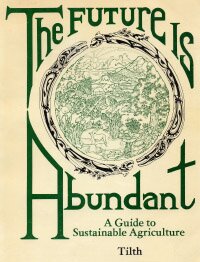
The Future is Abundant
A Guide to Sustainable Agriculture
Tilth Producers of Washington Home | WA Tilth Assoc. | Conference | Directory | Journal | Placement Service | Calendar | Action Alerts
Legislative Update | Bulletin Board | Classifieds | Questions on Agriculture? | Photo Gallery | Links | Contact Us | Join Now | Volunteer

Red Alder (Alnus rubra) is found in a narrow region along the Pacific Coast from California to southeast Alaska. Farmers and woodspeople west of the Cascades know red alder's ability to colonize disturbed or abandoned land. Red alder seedlings quickly cover road cuts and clearcuts, and crowd the edges of fields and streams. It is a strong cometitor with Douglas-fir, the major commercial timber tree.
Red alder obtains nitrogen from the air through colonies of symbiotic actinomycetes which form nodules on the tree's orange roots. This helps it survive on exposed, nutrient-poor ground. Within a few years the soil surface is covered with leaf litter and twigs. The soil becomes enriched with nitrogen and organic matter, thus preparing the way for succeeding species such as Douglas-fir, western red cedar, Sitka spruce or hemlock.
Red alder is also a good biomass energy crop, as it produces an abundance of usable fuel wood in less than 20 years. In Japan, one species of alder (A. inokumae) is grown in fuelwood plantations on poor sites. After harvest, the enriched land is often used for farmland for a few years before being replanted to conifers. [Trappe] In the Pacific Northwest, a few test plantations of alder are being established. One of them, near Centralia, Washington, is on land reclaimed after coal mining.
When used in a mixed stand or in short successional rotation with Douglas-fir, red alder helps fir resist parasitic colonization by Poria weirri, a fungus which attacks both living and dead fir trees. Recent experiments by the U.S. Forest Service show that planting red alder afterDouglas-fir trees have been harvested can greatly rduce or eliminate the threat of this disease. [Trappe]
U.S. Forest Service silviculturist Dean DeBell nicely sums up the virtues of alder when he states, "Although most foresters know that alder grows fast and improves soil conditions, they may not be aware that the energy that must be invested to grow a given amount of wood is lower for alder than for most other species. Alder also offers forest managers a lot of flexibility because it grows rapidly over a wide reange of site conditions. It is suitable for management systems reanging from short coppice (stump sprouting) rotations to sawlog production. It can be managed to supply nitrogen to conifer forests, improve forest soil, rehabilitate disturbed sites, and produce wood." [Bergstrom]
Tilth Producers of Washington Home | WA Tilth Assoc. | Conference | Directory | Journal | Placement Service | Calendar | Action Alerts
Legislative Update | Bulletin Board | Classifieds | Questions on Agriculture? | Photo Gallery | Links | Contact Us | Join Now | Volunteer